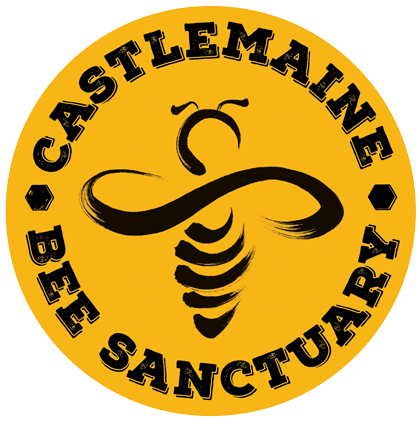 Ph. 0490 399 319
Ph. 0490 399 319 Ph. 0490 399 319
Ph. 0490 399 319
What Is Bee-Centred Beekeeping ? (Short Version)
What is Bee-Centered Beekeeping?
That’s what we’re here to find out.
There’s no single simple answer to this question.
I am giving you my opinion only.
Many names for the same thing – some differences. Essentially the same.
Tim Malfroy – Blue Mountains based Warre beekeeper.
Very honey focused. Needs of the colony above that of the beekeeper (honey)????
Respect and love of the bee colony.
Respect is the key – not just a box of insects – an amazing intelligent life force superorganism that can teach us so much.
Adrian Iodice – Bega Valley based Kenyan beekeeper. Only other classes I recommend.
I often use chicken analogy. Backyard compared to cage chickens. If you did a chicken keeping course and they taught you cage techniques you’d find that strange wouldn’t you?
This is what it boils down to.
We put the bees before honey.
Not to say we don’t harvest honey. I do harvest when I need honey.
Set of techniques that allow as much as possible bees to be bees.
Beekeepers don’t like to be specific about their techniques.
I’ve put my neck out and put together these 12 points that I think describes Bee-Centred beekeeping in terms of what we do and don’t do. Makes me very vulnerable to criticism.
Words are one thing but its what we do that defines us.
“Bee-friendly” bandied about. Woodend.
Natural Comb I’d say is the absolute most important aspect of Bee-Centred beekeeping.
Bees build comb like dogs bark and fish swim.
Comb is an extension of the bees. It’s part of the super organism.
Use comb for communication (vibration & chemical)
Bee-to-comb ratio controls pests.
Seems obvious that we’d let them but that’s not what happens in industrial beekeeping.
Foundation. Pre made “wax”. Problems – set cell sizes. Questionable source. Absorbs toxins.
Weird to eat comb honey with commercial foundation.
Plastic foundation.
Honey Super Cell.
Flow frames.
No medications. “Treatment Free” much bigger in US. No mites in Aus so less chemicals.
But – SHB treatments. Antibiotics. Essential oils.
Avoid feeding. Not no feeding. I never feed but understandable with few hives.
Need to feed usually because of over harvesting.
Messy, attracts pests, robbing, kills bees.
Sugar is not food for bees. Honey is food for bees.
Do not feed commercial honey contains AFB.
Perhaps feed own honey back to bees? Thermal properties.
Low interference.
This is a Japanese hive. Sort of Warre style. Box management. Lowest interference managed hives.
The best mostly do best when left alone.
Obliged by Apirary Code of Practice to inspect ? twice ? a year.
Recommended in spring to inspect every week.
Inspections vital for learning. More now less later.
No queen excluder.
Excluders for convenience. Ensure only honey in honey supers. Saves time for industrial beeks.
Taken on as standard for backyarders but totally unnecessary.
Necessary for Flow Hives.
Expensive. Usually metal so resource intensive.
Restricts access of queen to only bottom box(es).
Worker bees force through them can damage wings.
Some refer to them as a “honey excluder” as discourages bees full of honey from passing through.
Unnatural brood ball shape. Need to alter shape for different conditions.
Possibly encourages swarming (pheremones emitted by queen) … see Chemical Communication In The Honey Bee Society https://www.ncbi.nlm.nih.gov/books/NBK200983/
Avoid requeening.
Not never requeen. Perhaps if hive is too defensive for a particular location.
Pros requeen every 1 or 2 years. Kill queen replace with queen breeder stock. Wipe out genetic diversity.
Creates genetic bottleneck – probably the worst thing a beekeeper can do for the species overall – makes the entire species vulnerable. Bananas. Isle of White disease?
New queen almost certainly not locally adapted.
Ecotype – distinct form of species that occupy a particular habitat.
Minimal use of smoke.
Not no smoke. Smoke can be very handy but it is very disruptive to the bees.
Describe how smoke works (standard story and my story).
Can actually taste smoke in honey when heavy smoking used.
Sedentary beekeeping. Not moving bees.
Migratory beekeeping (honey cropping and pollination) standard in Australia.
Bees in nature do not move. Finely tuned ‘GPS’.
Very upsetting to bees to be moved. Natural cycles. Weakens bees. More susceptible to disease.
Poses most serious disease risk – spread disease around.
Leave enough honey for winter/dearth.
Honey is preserved bee food. (a fermented food)
Prefer nectar but honey is best. Always leave a generous amount of honey for the bees.
How much exactly is difficult to say.
In Castlemaine usually forage. New realiasation though… perhaps harvesting honey can be helpful in autumn?
Mimic natural structure of wild bee colony.
Logical fallacy? – appeal to nature. Seems to make sense to me.
Allow bees to be bees.
Natural comb, ideally no space above comb. No queen excluder.
Comb and Crush and strain as opposed to centrifugal spinning.
Not so much a bee-centred technique – just more fitting with style.
Although does encourage renewal of comb.
No expensive equipment. Better taste.
Working towards self sustainable apiaries.
Not buying in queens. Collect swarms and possibly splits.
Ensures locally adapted ecotypes.
Two articles that reiterate perhaps with more detail what I’ve covered here.
Milkwood permaculture blog: It’s The Birthright Of Bees To Build Comb
https://www.milkwood.net/2012/10/20/its-the-birthright-of-bees-to-build-comb
Natural Beekeeping Trust: Bee-Centred -vs- Conventional Beekeeping
https://www.naturalbeekeepingtrust.org/bee-centred-vs-conventional